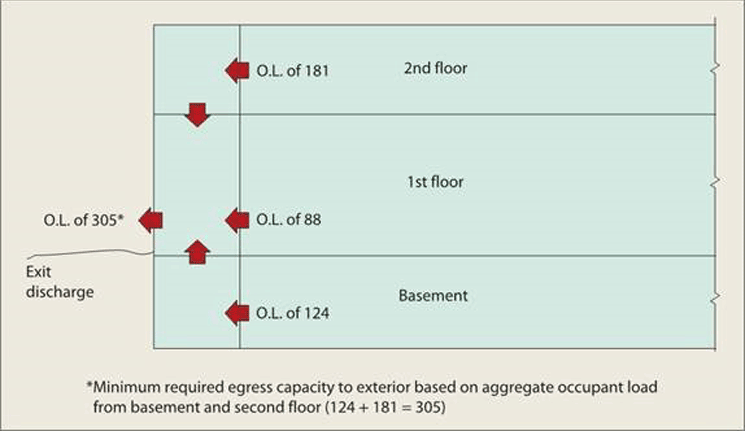What is “egress convergence” and when am I required to evaluate it?
Egress capacities are typically evaluated on a floor-by-floor basis, with the occupant load of each story considered individually in calculating the required capacity. The exception to this approach is where egress convergence results in two floors arriving at a component simultaneously (see image at top left).
Egress convergence occurs where the means of egress from stories above and below converge at an intermediate level, with occupants from multiple floors discharging through an egress component simultaneously. For example, in the second image, the egressing occupants from the 1st and 2nd Floors converge at the exit discharge door from Stair 1.
Where egress convergence occurs, the capacity of the means of egress component following the convergence is required to be the larger of (1) not less than the largest minimum width, or (2) the sum of the required capacities for the stairways or ramps serving the two adjacent stories (780 CMR 1005.6).
Egress convergence can result in drastically reduced egress capacities and allowable occupant loads from floors unless accounted for. When calculated, egress convergence may result in an increase in exit discharge door width, or the need for a double door at the exit discharge instead of a single door.
(Source: International Building Code (2015) Illustrated)



